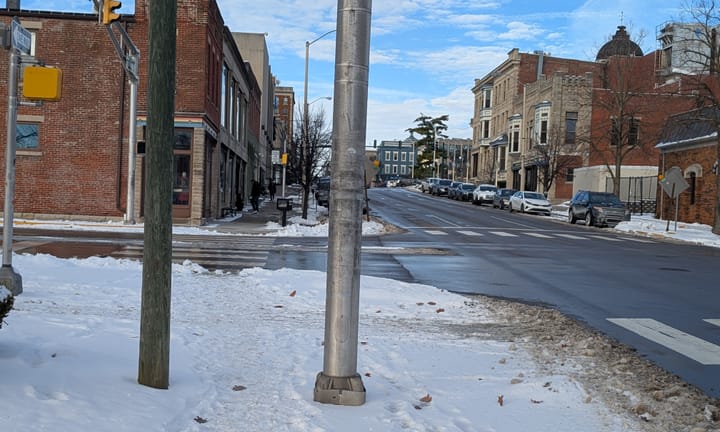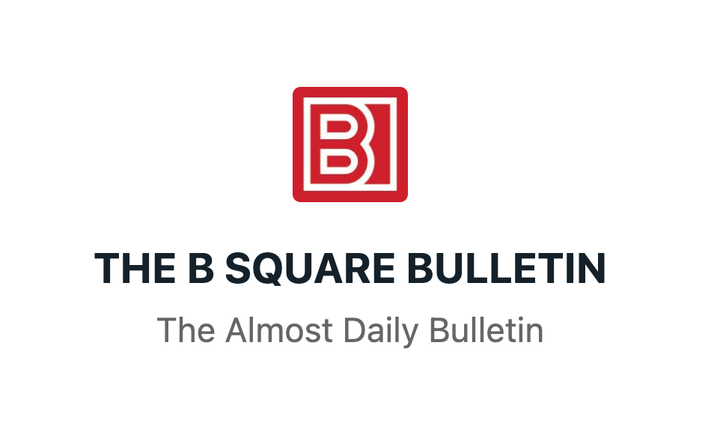Local food bank, pantries look to bridge gap for Monroe County from SNAP benefits freeze
As a result of the current federal government shutdown, Supplemental Nutrition Assistance Program (SNAP) benefits are set to dry up in just a few days. No funds for November benefits are expected to be distributed. Local food banks and pantries are working to bridge the gap.


As a result of the current federal government shutdown, Supplemental Nutrition Assistance Program (SNAP) benefits are set to dry up in just a few days. No funds for November benefits are expected to be distributed.
Nationwide, one in eight people rely on SNAP benefits to get by. According to the Indiana Family and Social Services Administration, 7,697 people in Monroe County used SNAP benefits during the month of September alone.
“We are facing a potential crisis that will change the dynamics of our discussion from food insecurity to actual, literal hunger,” Hoosier Hills Food Bank CEO Julio Alonso said in statement released Tuesday (Oct. 28). SNAP is funded by the U.S. Department of Agriculture (USDA); however, USDA funds—including SNAP contingency funding—will not be made available until the federal government shutdown ends.
“You start talking about that many folks losing access to their food services while food costs are increasing, and it really does become a real squeeze for families pretty quickly,” says Vicki Pierce, Executive Director of Community Kitchen of Monroe County.
Pierce notes that the number of people coming to the Community Kitchen for meals has steadily increased since early summer when more stringent work requirements were instituted for SNAP recipients. Work requirement exemptions for veterans and people experiencing homelessness were eliminated. “There also used to be waivers for certain individuals over the age of 55 with children under 18,” Pierce says.
Pantry 279, located at 3610 W. State Road 46, has seen many more visits since the passage of the Big Beautiful Bill Act. “It was about 100 people every couple of weeks, and then July hit—and that was when I think some of the first cuts started coming with Medicaid, Medicare, and stuff like that—and we popped to 11,000 people in one month,” says Cindy Chavez, executive director of Pantry 279. “But understand that we serve 37 counties. People are willing to drive that far to get food.”
Mother Hubbard’s Cupboard director of development Lou Barnhart also has noticed a surge in traffic to Mother Hubbard's Cupboard located at 1100 W. Allen St. “We were seeing about 100,000 visits per year and we're already seeing a 20% increase every single month in the number of visits that we have,” she says.
Area townships also are on the frontlines to help with food insecurity. “We’re a food pantry as well as an organization that provides emergency financial assistance for people experiencing hardship,” Bloomington Township Trustee Efrat Rosser says.
Located at 924 W. 17th St., Suite C, the Bloomington Township food pantry is open Monday through Thursday from 10 a.m. to 6 p.m., and households in need may visit once per week. Rosser has seen an increase in requests for assistance and, in addition to SNAP-related pressures, she's concerned about the impacts recently passed state legislation will have on her ability to serve area residents.
Regarding House Bill 1461, for instance, Rosser says, “At the last minute, [the state legislature] decided that townships with unrestricted funds—which for a lot of us is like our rainy day fund—need to transfer over 30% of that at the end of each year to a local city or county road project in our township.”
What’s more, SEA 1 is similarly poised to strip away about one quarter of the township’s annual revenue. “The property tax relief that homeowners and property owners are getting is coming from cuts to all [local] government units,” she says.
For his part, Perry Township Trustee Dan Combs says, “We can provide vouchers for people to go to the grocery stores.” That said, he's quick to point out that applying for and subsequently receiving such assistance isn't instantaneous. “It's like a nine-page application,” he explains. “We can expedite it to a certain degree, but it's not a same-day service. ... However, once you receive it, you're good-to-go for six months to a year.”
The Perry Township office located at 1010 S. Walnut St. also operates a small food pantry for area residents whose income falls below 185% of the federal poverty guidelines. “[Food] availability is based on what Hoosier Hills Food Bank has and also what food the federal government disperses,” Combs says.
To help locals cope with the impending disruption in SNAP benefits, Hoosier Hills Food Bank plans to spend an estimated $249,782 in emergency funding for November. In part, that funding will come from the Community Foundation of Bloomington and Monroe County which is putting $100,000 into the effort.
Also helping with November’s effort are Smithville Charitable Foundation, Feeding America, and Monroe County’s Sophia Travis Community Grant program. The money will cover 10 truckloads of supplies including peanut butter, frozen turkeys, fresh potatoes and other produce, and pre-packed, non-perishable food boxes. Besides Monroe County agencies, Hoosier Hills Food Bank also supplies food pantries, shelters, and other meal providers in Brown, Lawrence, Martin, Orange, and Owen Counties.
“SNAP provides 9 meals for every one that we do,” Alonso says. “On top of already high levels of need that always escalate during the holidays, we are trying to replace over $3 million in benefits in our six-county service area that support food for over 16,000 people. It’s not sustainable. And that’s not just money going to people to buy food, it’s $3 million worth of economic activity that will not happen.”
Indeed, the loss of SNAP benefits is a hit to local grocers like Bloomingfoods as well as to vendors at the Bloomington Community Farmers Market. During the 2025 season so far, a total of $19,122 “Market Bucks” were spent with vendors—that represents $9,813 in SNAP benefits and another $9,309 in matching funds from the City of Bloomington.
When area merchants—and SNAP recipients—will see SNAP funding flowing again remains to be seen.
Regardless, local food pantries, the Community Kitchen, Hoosier Hills Food Bank, and similar entities can always use volunteers and cash and food donations. “When the government fails its people, the people will take care of each other,” Barnhart says. “And that’s kind of what community is, right? We will take care of each other in times of need.”




Comments ()